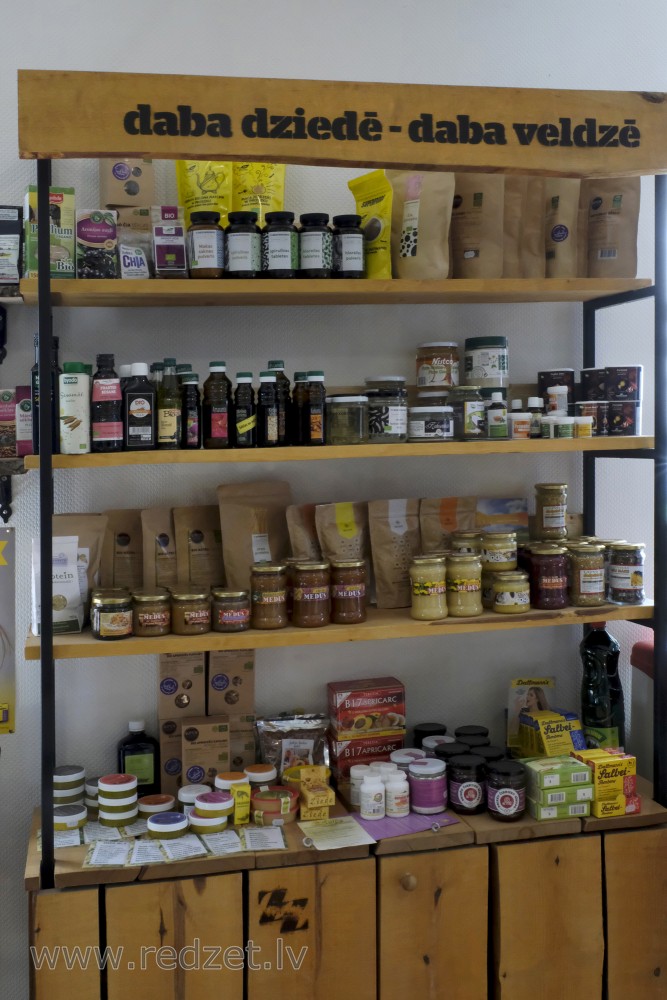Organic food
Organic food is food produced by methods that comply with the standards of organic farming. Standards vary worldwide, but organic farming in general features practices that strive to cycle resources, promote ecological balance, and conserve biodiversity. Organizations regulating organic products may restrict the use of certain pesticides and fertilizers in farming. In general, organic foods are also usually not processed using irradiation, industrial solvents or synthetic food additives.
Currently, the European Union, the United States, Canada, Mexico, Japan, and many other countries require producers to obtain special certification in order to market food as organic within their borders. In the context of these regulations, organic food is produced in a way that complies with organic standards set by regional organizations, national governments and international organizations. Although the produce of kitchen gardens may be organic, selling food with an organic label is regulated by governmental food safety authorities, such as the US Department of Agriculture (USDA) or European Commission (EC).
There is not sufficient evidence in medical literature to support claims that organic food is safer or healthier than conventionally grown food. While there may be some differences in the nutrient and antinutrientcontents of organically- and conventionally-produced food, the variable nature of food production and handling makes it difficult to generalize results. Claims that organic food tastes better are generally not supported by evidence.
Meaning and origin of the term
For the vast majority of its history, agriculture can be described as having been organic; only during the 20th century was a large supply of new products, generally deemed not organic, introduced into food production. The organic farming movement arose in the 1940s in response to the industrialization of agriculture.
In 1939, Lord Northbourne coined the term organic farming in his book Look to the Land (1940), out of his conception of "the farm as organism," to describe a holistic, ecologically balanced approach to farming—in contrast to what he called chemical farming, which relied on "imported fertility" and "cannot be self-sufficient nor an organic whole." Early soil scientists also described the differences in soil composition when animal manures were used as "organic", because they contain carbon compounds where superphosphates and haber process nitrogen do not. Their respective use affects humus content of soil. This is different from the scientific use of the term "organic" in chemistry, which refers to a class of molecules that contain carbon, especially those involved in the chemistry of life. This class of molecules includes everything likely to be considered edible, and include most pesticides and toxins too, therefore the term "organic" and, especially, the term "inorganic" (sometimes wrongly used as a contrast by the popular press) as they apply to organic chemistry is an equivocation fallacy when applied to farming, the production of food, and to foodstuffs themselves. Properly used in this agricultural science context, "organic" refers to the methods grown and processed, not necessarily the chemical composition of the food.
Ideas that organic food could be healthier and better for the environment originated in the early days of the organic movement as a result of publications like the 1943 book The Living Soil and Farming and Gardening for Health or Disease (1945).
In the industrial era, organic gardening reached a modest level of popularity in the United States in the 1950s. In the 1960s, environmentalists and the counterculture championed organic food, but it was only in the 1970s that a national marketplace for organic foods developed.
Early consumers interested in organic food would look for non-chemically treated, non-use of unapproved pesticides, fresh or minimally processed food. They mostly had to buy directly from growers. Later, "Know your farmer, know your food" became the motto of a new initiative instituted by the USDA in September 2009. Personal definitions of what constituted "organic" were developed through firsthand experience: by talking to farmers, seeing farm conditions, and farming activities. Small farms grew vegetables (and raised livestock) using organic farming practices, with or without certification, and the individual consumer monitored. Small specialty health food stores and co-operatives were instrumental to bringing organic food to a wider audience. As demand for organic foods continued to increase, high volume sales through mass outlets such as supermarkets rapidly replaced the direct farmer connection. Today, many large corporate farms have an organic division. However, for supermarket consumers, food production is not easily observable, and product labeling, like "certified organic," is relied upon. Government regulations and third-party inspectors are looked to for assurance.
In the 1970s, interest in organic food grew with the publication of Silent Spring and the rise of the environmental movement, and was also spurred by food-related health scares like the concerns about Alar that arose in the mid-1980s.
Legal definition
Organic food production is a self-regulated industry with government oversight in some countries, distinct from private gardening. Currently, the European Union, the United States, Canada, Japan, and many other countries require producers to obtain special certification based on government-defined standards in order to market food as organic within their borders. In the context of these regulations, foods marketed as organic are produced in a way that complies with organic standards set by national governments and international organic industry trade organizations.
In the United States, organic production is managed in accordance with the Organic Foods Production Act of 1990 (OFPA) and regulations in Title 7, Part 205 of the Code of Federal Regulations to respond to site-specific conditions by integrating cultural, biological, and mechanical practices that foster cycling of resources, promote ecological balance, and conserve biodiversity. If livestock are involved, the livestock must be reared with regular access to pasture and without the routine use of antibiotics or growth hormones.
Processed organic food usually contains only organic ingredients. If non-organic ingredients are present, at least a certain percentage of the food's total plant and animal ingredients must be organic (95% in the United States,] Canada, and Australia). Foods claiming to be organic must be free of artificial food additives, and are often processed with fewer artificial methods, materials and conditions, such as chemical ripening, food irradiation, and genetically modified ingredients. Pesticides are allowed as long as they are not synthetic. However, under US federal organic standards, if pests and weeds are not controllable through management practices, nor via organic pesticides and herbicides, "a substance included on the National List of synthetic substances allowed for use in organic crop production may be applied to prevent, suppress, or control pests, weeds, or diseases." Several groups have called for organic standards to prohibit nanotechnology on the basis of the precautionary principle in light of unknown risks of nanotechnology.The use of nanotechnology-based products in the production of organic food is prohibited in some jurisdictions (Canada, the UK, and Australia) and is unregulated in others.
en.wikipedia.org
https://en.wikipedia.org/wiki/Organic_food
Continue reading




